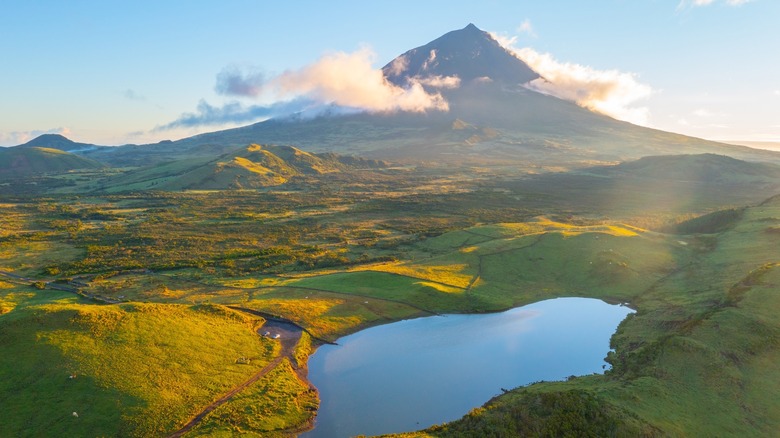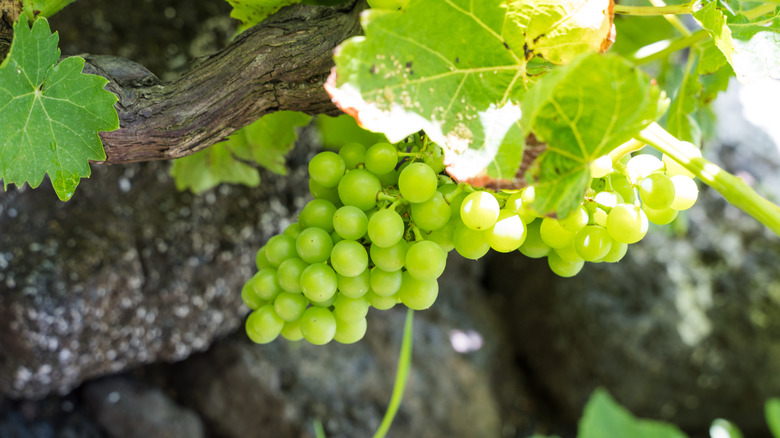This Little-Known European Island Promises An Uncrowded And Exotic Getaway
There is no shortage of islands around Europe. So when it comes to island hopping around Greece or scheduling a healing visit to Six Senses Ibiza, tourists from around the world have a lot of options. In contrast to well-known islands like Capri and Tenerife, there is an archipelago off the west coast of Portugal that offers dynamic landscapes, temperate climates, and fewer crowds. Azores is made up of nine islands, spread across the Macaronesia region of the North Atlantic. In the center of this string of islands lies Pico, an underrated gem with a striking landscape and endless opportunities for exploration.
Pico is known for its beauty. Perhaps it doesn't feature the lush landscape of nearby "Green Island" Sao Miguel, or postcard white sand beaches found elsewhere, but what it does offer is vast stretches of lava, challenging hikes, water activities, and trademark wines. The island mirrors the volcanic scenery of the Big Island of Hawaii while maintaining a low-profile image and secrets of its own.
Pico's personality traits
Pico is the second largest of the Azores islands and is home to about 14,000 full-time residents. It's an autonomous region of Portugal, and the mainland and the islands share much in the way of culture. However, Pico features the highest mountain in Portugal. Standing over 7,700 feet high, this dormant volcano, also called Pico, dominates the skyline on the island and from afar.
Visitors can hike Pico Mountain via a strenuous 2.36-mile path that ascends over 3,700 feet in elevation. Guides are recommended for the climb, which takes around three to four hours each direction to traverse. However, on a clear day, climbers are rewarded with widespread views of Pico and surrounding islands, plus rights to the claim of having stood at the highest point in Portugal.
If this level of demanding physical activity isn't what you had in mind, don't fret. You'll be able to take in the beauty of the mountain while exploring nearly any point on the island. While there's no denying the volcanic history of the island, with a landscape covered in lava rock formations and lava tubes, that's just one of Pico's iconic gifts.
Flora, Agriculture, and History
While the island's gray, lava-rich terrain is a dazzling contrast with the blues of the ocean surrounding it, its topography also features endemic vegetation such as heather and Vidalia. Although these plants will undoubtedly catch your eye, it's impossible to overlook the importance of those that are made into wine.
With its unique blend of volcanic soil, wine grapes thrive on the island and beguile visitors as they cover the countryside. Commingled with fields of livestock and agricultural land, their vines are a ubiquitous part of landscape as well as an essential part of Pico history and culture — so much so that stone walls protect the plants from the harsh elements of the sea. Due to the island's combination of traditional cultivation methods, UNESCO added the Vineyard Cultivation Landscape of Pico Island to its World Heritage Sites.
If you want to know more about the wine history of the island, make a stop at the Pico Wine Museum in Madalena. With its rich history, quiet roads, and many natural wonders, Pico is worth a visit, but if you're not convinced, check out an assortment of other affordable islands, including another Portuguese island, Madeira.


